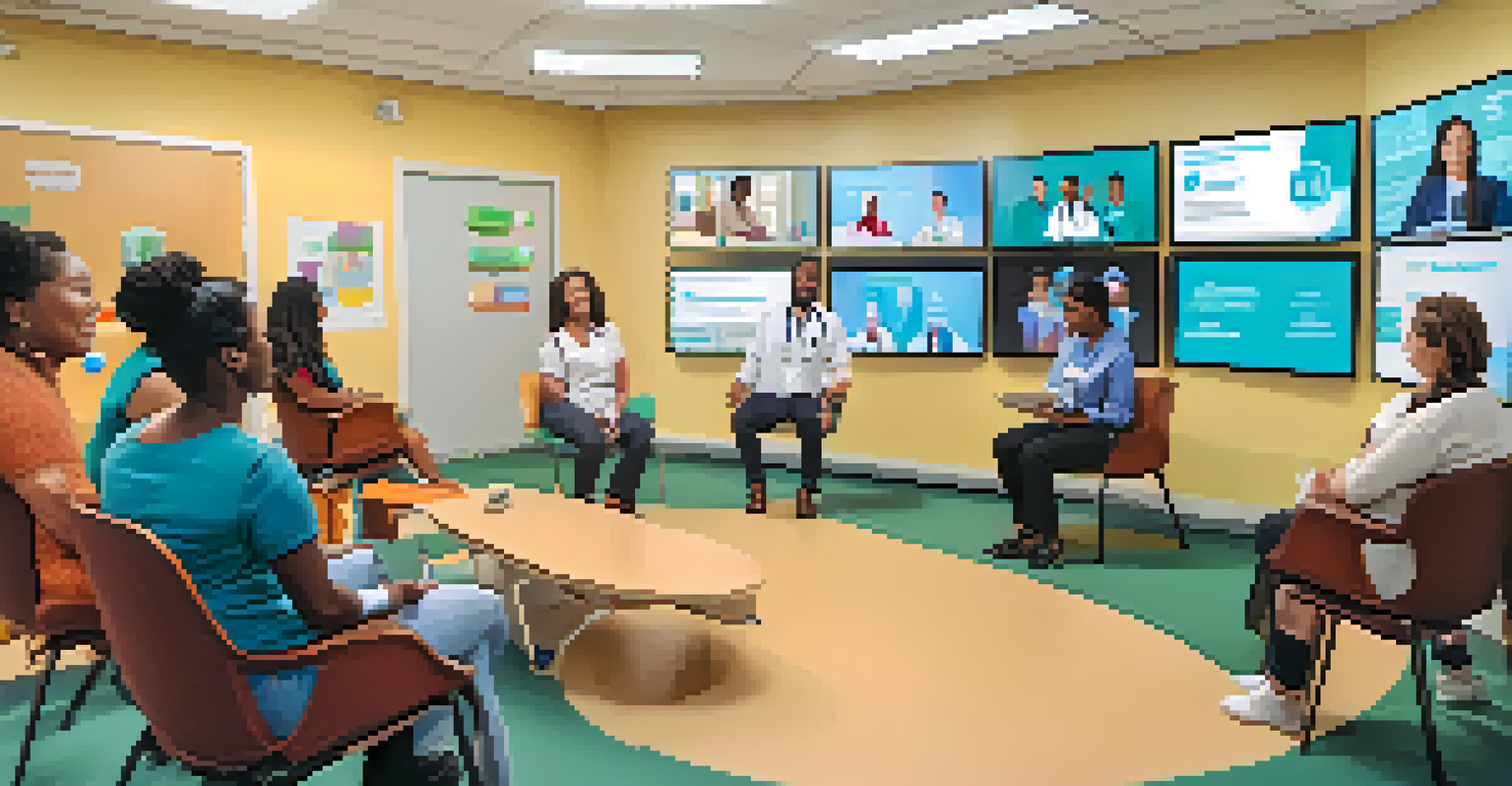Telehealth: Bridging the Gap in Healthcare Accessibility

Understanding Telehealth and Its Importance
Telehealth refers to the use of technology to deliver healthcare services remotely. This includes virtual consultations, remote monitoring, and health education over the internet. With the rise of digital communication, telehealth has become a vital tool in bridging the gap in healthcare accessibility.
Telehealth is a vital tool in bridging the gap in healthcare accessibility.
The significance of telehealth lies in its ability to reach individuals who may face barriers to accessing traditional healthcare. Whether it’s due to geographic distance, mobility issues, or time constraints, telehealth offers solutions that can make a real difference. Imagine someone living in a rural area, who can now consult a specialist without the need for a long drive.
Moreover, telehealth can enhance patient engagement by making healthcare more convenient. Patients can schedule appointments at their convenience, reducing no-show rates and allowing for more consistent care. This shift not only improves patient outcomes but also helps providers manage their schedules more efficiently.
Overcoming Geographic Barriers with Telehealth
One of the most significant advantages of telehealth is its ability to eliminate geographic barriers. In many remote areas, access to specialized healthcare professionals can be extremely limited. Telehealth changes that by connecting patients to providers regardless of their physical location.

For instance, a farmer in a rural community can consult with an endocrinologist in a major city without the hassle of traveling for hours. This not only saves time but also creates access to a broader range of services that might not be available locally. It's like having a world-class expert just a click away.
Telehealth Bridges Accessibility Gaps
Telehealth enables individuals in remote or underserved areas to access healthcare services, overcoming traditional barriers.
Additionally, telehealth can also benefit urban populations who may face congestion or long wait times for appointments. Virtual visits can reduce the strain on healthcare facilities, ensuring that everyone gets the attention they need when they need it. This can lead to a more streamlined healthcare system overall.
Enhancing Care for Underserved Populations
Telehealth is particularly beneficial for underserved populations, including low-income families and minority groups. These communities often face systemic barriers that make accessing healthcare challenging. Telehealth can help bridge that gap by providing services that are more accessible and affordable.
The future of telehealth appears promising, as technology continues to evolve.
For example, individuals without transportation can easily access medical advice from their homes, reducing missed appointments and improving health outcomes. This is crucial for managing chronic conditions like diabetes or hypertension, where regular check-ins are essential. It’s like having a supportive friend who is always there to help you stay on track.
Moreover, telehealth can also provide culturally competent care by allowing patients to connect with providers who understand their backgrounds and needs. This personalized approach fosters trust and encourages more individuals to seek help, ultimately leading to better community health.
Building Stronger Patient-Provider Relationships
Telehealth can strengthen the relationship between patients and healthcare providers by facilitating more frequent interactions. Traditional in-person visits can sometimes feel rushed, but virtual consultations allow for more relaxed conversations. This can lead to a deeper understanding of a patient's concerns and needs.
Consider the scenario where a patient is feeling anxious about their health. A telehealth appointment provides a comfortable environment for them to express those feelings without the pressure of an office setting. This increased comfort can lead to more honest discussions and better care decisions.
Enhances Patient-Provider Communication
Virtual consultations foster stronger relationships between patients and providers, allowing for more personalized care.
Additionally, with the use of secure messaging and video calls, providers can follow up more easily. Quick check-ins can help ensure that treatment plans are being followed, and adjustments can be made in real-time. This ongoing dialogue fosters a collaborative approach to healthcare, benefiting everyone involved.
Cost-Effectiveness of Telehealth Services
One of the most appealing aspects of telehealth is its cost-effectiveness. By reducing the need for physical office space and streamlining processes, healthcare providers can save money, which can then be passed on to patients. For many, this means more affordable care options.
Think about it: patients save on transportation costs, and they can also minimize time off work. This is especially important for those who may struggle to take time away from their jobs. Telehealth essentially removes the financial burden associated with traditional healthcare visits, making it a win-win situation.
Moreover, many insurance providers are beginning to cover telehealth services, further increasing accessibility. As telehealth continues to gain traction, it's likely that more comprehensive coverage will emerge, making it an integral part of the healthcare landscape.
Technology: The Backbone of Telehealth
At the heart of telehealth is technology, and its rapid advancement has made virtual healthcare possible. From smartphones to secure video conferencing platforms, technology enables seamless communication between patients and providers. This is akin to having a virtual waiting room that is always open.
Additionally, the integration of wearable devices and health apps allows for real-time health monitoring. Patients can share data with their healthcare providers, giving them a clearer picture of their health status. It’s like having a personal coach who tracks your progress and provides guidance when needed.
Cost-Effective Healthcare Solutions
Telehealth reduces costs for both patients and providers, making healthcare more affordable and accessible.
However, it's essential to ensure that technology is user-friendly and accessible to all age groups. Training and support for patients unfamiliar with digital tools can help bridge this gap, ensuring that everyone can benefit from telehealth services.
Challenges and Future of Telehealth
Despite its many advantages, telehealth is not without challenges. Issues such as internet access disparities, security concerns, and the need for regulations can hinder its widespread adoption. For instance, some rural areas may lack reliable internet, which can be a barrier to accessing virtual care.
Moreover, ensuring patient privacy and data security is paramount. As more healthcare services move online, safeguarding sensitive information becomes increasingly important. Providers must invest in robust cybersecurity measures to protect both their patients and their practices.

Looking ahead, the future of telehealth appears promising. As technology continues to evolve and regulations adapt, we can expect telehealth to become an integral part of healthcare. By addressing current challenges, we can create a system where everyone has access to the care they need, when they need it.